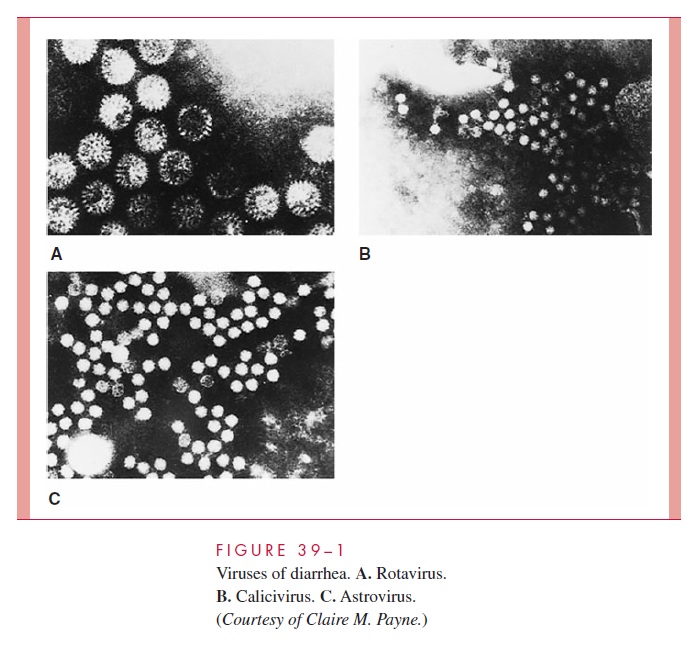Chapter: Medical Microbiology: An Introduction to Infectious Diseases: Viruses of Diarrhea
Adenoviruses, Astroviruses, And ÔÇťCandidateÔÇŁ Viruses
ADENOVIRUSES, ASTROVIRUSES, AND ÔÇťCANDIDATEÔÇŁ VIRUSES
Some adenoviruses, most of which are exceedingly difficult to cultivate in vitro (in con-trast to those associated with respiratory diseases), are now recognized as significant intestinal pathogens. They may account for an estimated 5 to 15% of all viral gastroenteritis in young children. These include serotypes 40, 41, and perhaps 38.
Astroviruses have a shape that resembles a 5- or 6-pointed star (see Fig. 39ÔÇô1). Thesehave been known since 1975. In recent years astroviruses have been acknowledged as causes of often mild gastroenteritis outbreaks, primarily among toddlers, school children and elderly nursing home residents.

Other agents associated with gastrointestinal diseases include coronavirus-like agents, toroviruses, and some group A coxsackieviruses (the latter primarily cause gastrointesti-nal symptoms in severely immunocompromised patients). This list may grow in the fu-ture; however, until more is learned about their biology, epidemiologic behavior, and im-pact on human health, they remain ÔÇťcandidateÔÇŁ viruses for now.
Related Topics